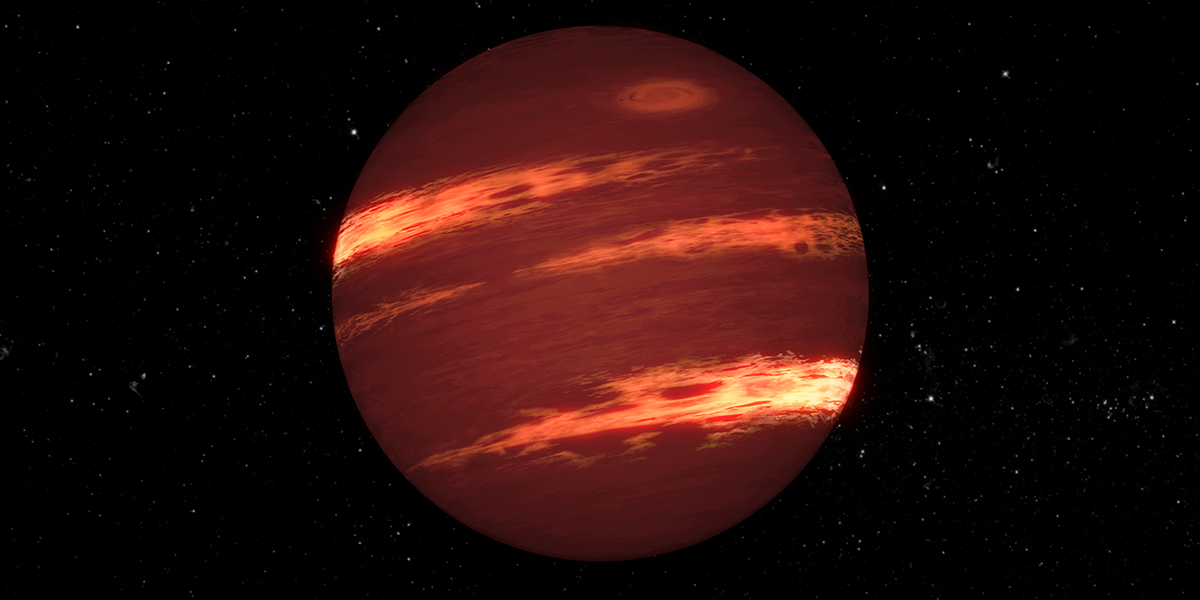
- This event has passed.
Family Astronomy Night, Wednesday, April 7, 2021 at 7 PM EST – VIRTUAL EVENT
April 7, 2021 @ 7:00 pm - 8:30 pm EDT
FREE
Please check back soon for a recording of this presentation!
Brown Dwarfs: More Numerous than Stars?
What if a star tries to form but doesn’t quite make it? What happens then? Have you heard that such objects might be more common in our universe than normal stars? And that, despite this, none are visible with the unaided eye, and that astronomers with telescopes did not detect any for almost five hundred years? Are you aware that the first one was not confirmed until only about twenty-five years ago? And yet, thousands are now known? How is all this possible? Also, do you know what the stars (and planets) visible by eye are doing in April? Finally, have you heard what the Perseverance mission has been doing since it landed on Mars? Join us by Zoom to learn more!
Please register to receive the Zoom login. You may register up to the presentation start time or even during the meeting to join us. https://msu.zoom.us/webinar/register/WN_6PlVdISYRPOuET1PZ6SVvQ
Adults and families with school-age and older children are invited to join us virtually for a presentation focused on brown dwarfs: what they are, how they form, how long they live, and how they end up. What does that name mean—are they actually brown? We will show how difficult it is to detect brown dwarfs, and how hard it can be to tell the difference between brown dwarfs and very small normal stars. (You might think they would look completely different, but they don’t!). We will offer some evidence for why astronomers think they might be extremely common, even though so few are known compared to the billions of stars we can see. We will describe the technology needed to detect brown dwarfs and the space missions that have used it. We will finish with a brief update on the Perseverance rover and the Ingenuity helicopter.
And, as always, we will show you how to find the planets and other cool things that are in the sky this month and into April. Are you able to find the brilliant “Winter Hexagon” and all its parts (like Orion, Gemini, and Canis Major) in the sky before it sinks into the west? Have you seen Mars in the evening, or Jupiter and Saturn low in the pre-dawn sky? Do you know about the upcoming meteor showers? Finally, are you aware that the brightest star in the night sky—including the southern hemisphere—is a late winter star in Michigan, and is visible in April evenings? We will help you see all of these things for yourself.
Photo credit: This artist’s concept shows a brown dwarf with bands of clouds, thought to resemble those seen at Neptune and the other outer planets. Credit: NASA/JPL-Caltech – https://exoplanets.nasa.gov/news/1450/scientists-improve-brown-dwarf-weather-forecasts/
You may also follow us on Facebook or join our mailing list to receive notices about upcoming Astronomy Night presentations and other events at MSU St. Andrews.
Attention students: MSU St. Andrews participates in the Great Lakes Bay Region STEM Passport program. You may attend an event or workshop and log it as a STEM experience on your passport!
Michigan State University is committed to providing equal opportunity for participation in all programs, services, and activities. Accommodation for persons with disabilities may be requested by contacting (517) 432-4499 by Monday, April 5, 2021. Requests received after this date will be honored whenever possible.


